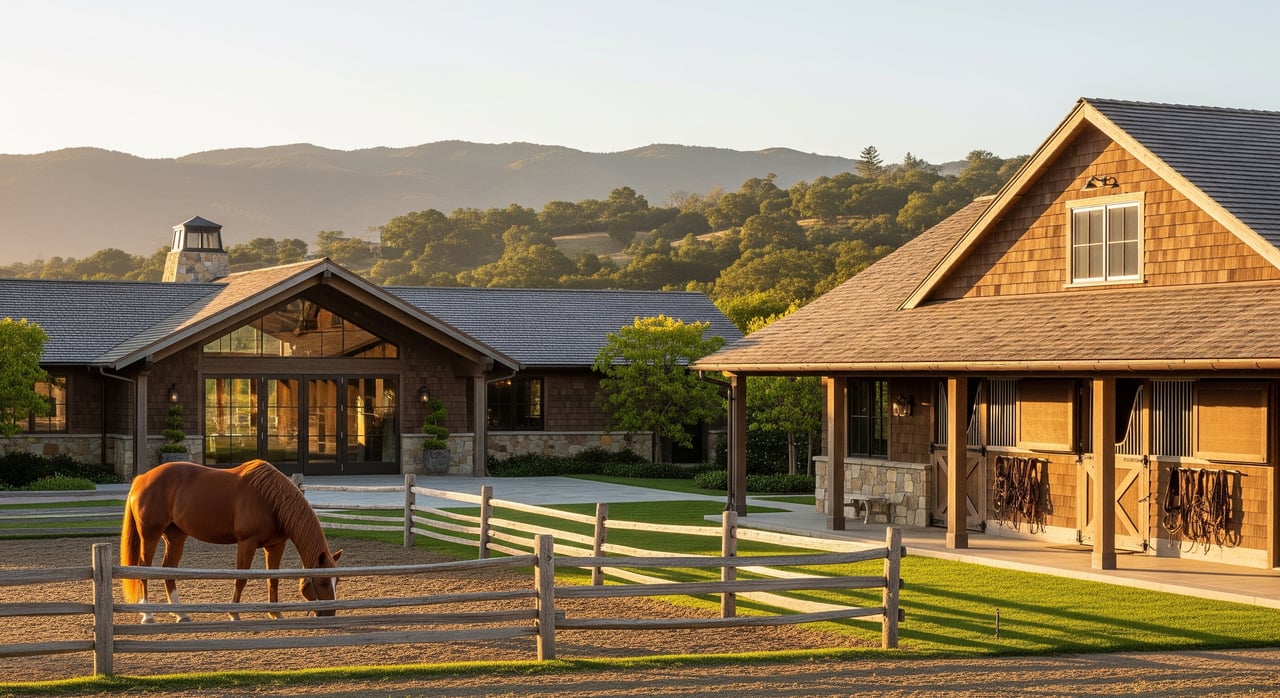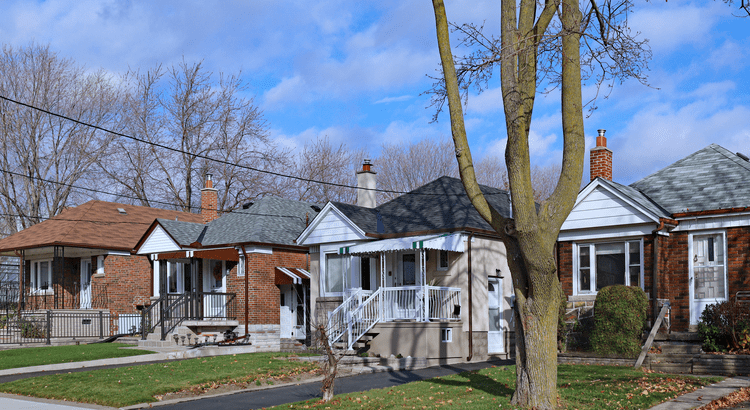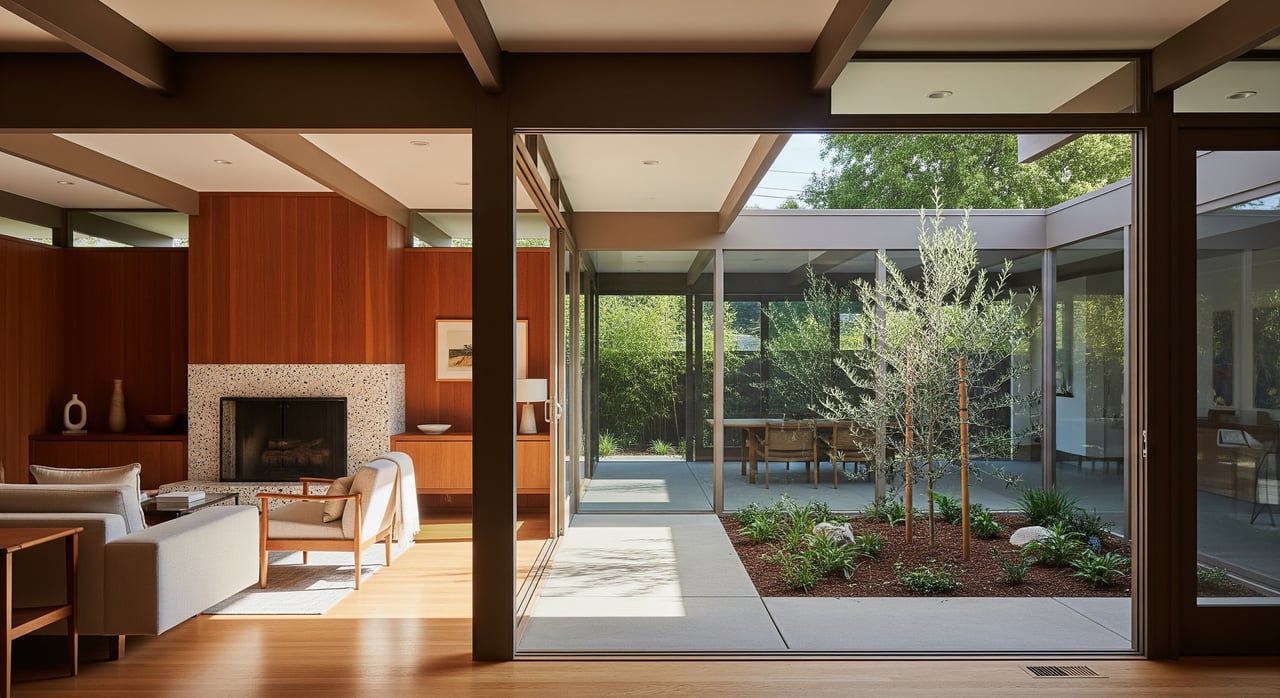We're so close to starting summer, which means you're likely spending more time outside in your garden. From experienced gardeners to newbies, it's important to note that the most eye-catching yards don't solely focus on one aspect of landscape design, like beautiful blooms, elegant water features, or charming greenery. For a balanced and dynamic yard that's the envy of the neighborhood, it's good to ensure that your darker areas are decorated with the proper shade-loving plants.
While blooms that bask in the sun and can tolerate the heat of summer typically get all the attention, it's important to also incorporate hearty, shade-friendly varietals that can tolerate less-than-ideal conditions and still bring beauty to every corner of your yard. The best part? Shade-friendly plants can be just as stunning as their sunnier counterparts. Many beautiful annuals, perennials, shrubs, and ornamental grasses love the shade, so whether you're looking for something to plant under a tree, in your flower beds, or in containers on a backyard patio, there is a wide variety of plants for you to pick from.
As you browse our list of the best shade plants, keep in mind both seasonality and the light tolerance of different varieties. As a general rule of thumb, any plant labeled "full-shade" needs fewer than three hours of direct sunlight during the day. Likewise, partial-shade plants require only three to six hours of shade a day, while some shade lovers, such as flowering shrubs, bloom best when exposed to mild morning sun, especially during the summer months. Below, we're rounding up 25 of the best shade plants to brighten up any dark spot in your garden.
Vinca Minor Periwinkle Vine
Featuring rich, purple blooms, the Vinca Minor periwinkle vine provides a burst of color to your garden from late spring into the fall months. Shade-tolerant and hardy, this beautiful plant is great for gardening beginners. They thrive in USDA Hardiness Zones 4 through 8.
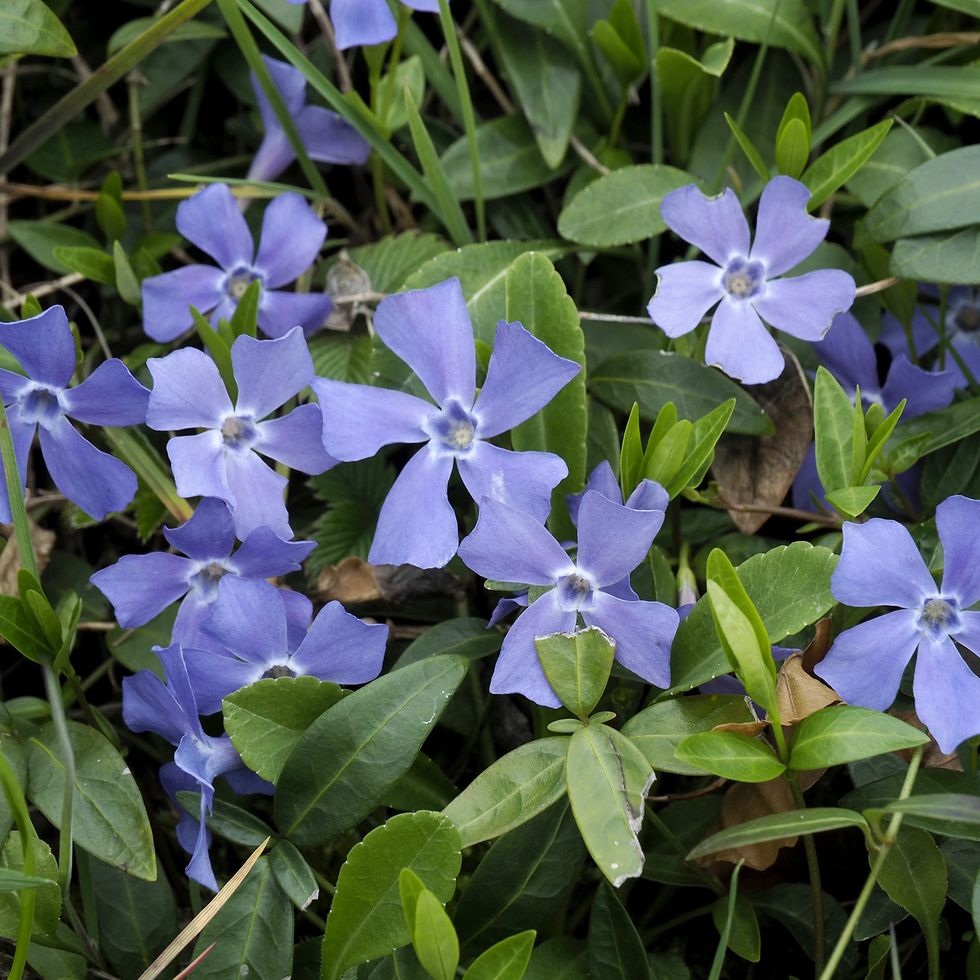
'Chocolate Chip' Bugleweed
Best used as a ground cover in sparse areas of your garden, this variety of bugleweed boasts spiky, violet flowers with dark green and brown foliage. Because this shade-loving plant is so dense, it helps to control stubborn weeds that love to pop through. Plant in USDA Zones 4 through 9.

'Chantilly Lace' Goatsbeard
This deer-resistant plant—also known as astilbe—grows primarily vertically, making it a great space-saving variety for smaller gardens. The bright, cream blooms are soft and fluffy, adding a dimensional texture to your landscaping. Plant in USDA Zones 3 through 7.
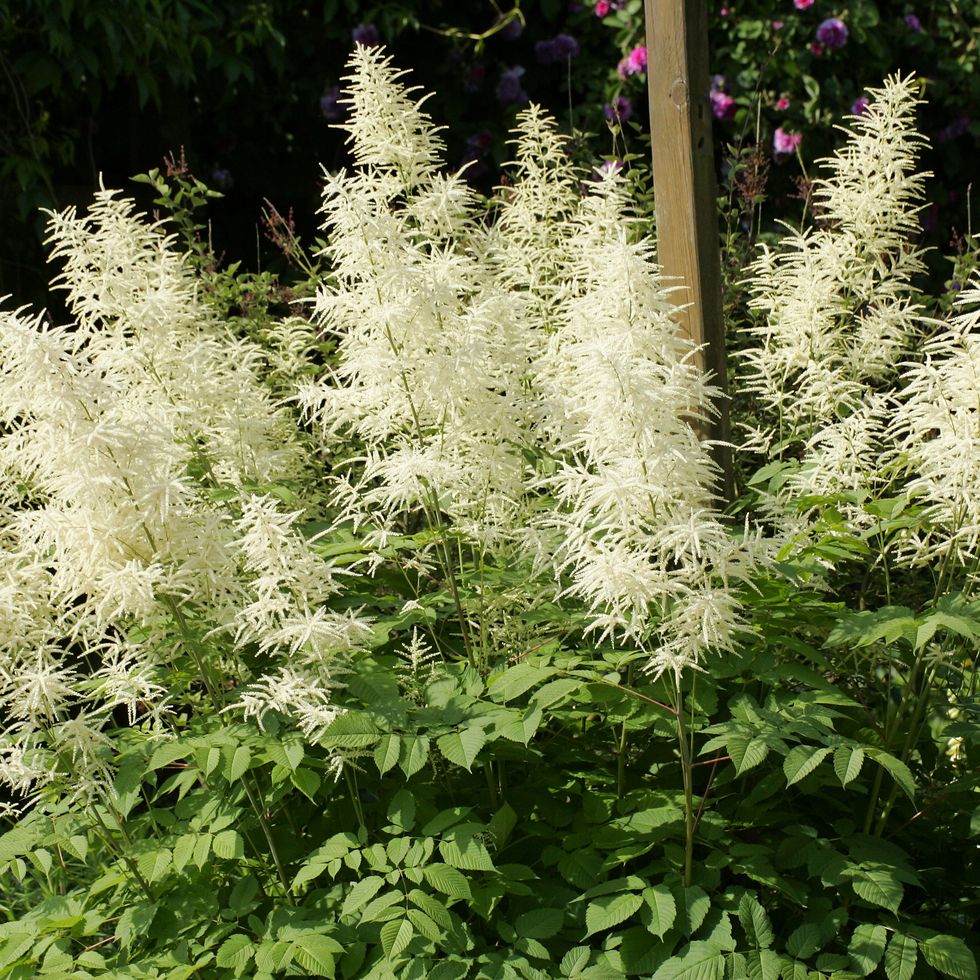
Cherry Heuchera
This shade-loving plant is the epitome of fall color. The vibrant orange and red foliage on cherry heuchera keeps its color throughout the long growing season, even in full shade. This perennial will also survive through mild to moderate winters. Plant in USDA Zones 4 through 9.
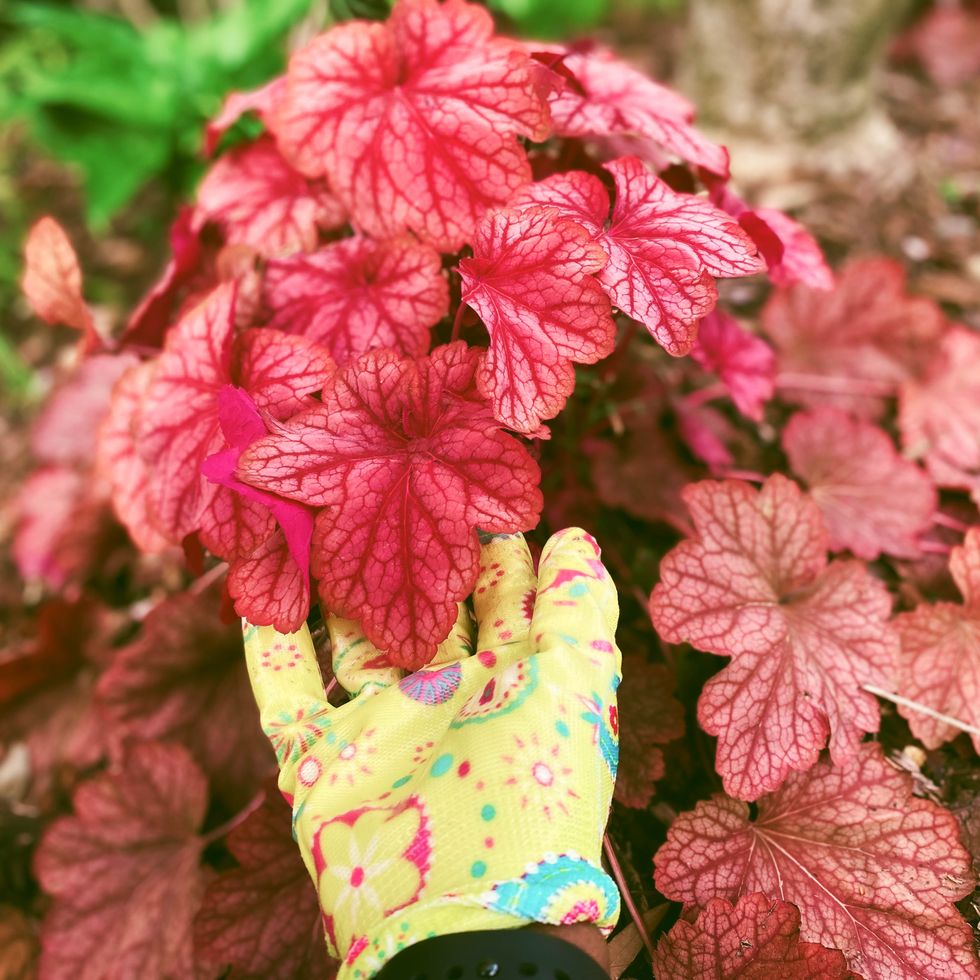
'Queen of Hearts' Siberian Bugloss
This shade-loving plant erupts with silver-blue, heart-shaped blooms whether it's planted in full sun or full shade. Siberian bugloss is ideal for those looking for deer-resistant plant varieties and is known for its hardy nature. Plant in USDA Zones 3 through 8 for best results.

Blue Oat Grass
For those who live in a cold climate or experience harsh winters, blue oat grass is a great bet for year-round color and interest. It never loses its silver-blue hue, no matter the temperature, and you don't have to worry about it getting too much shade. This is a great option for those looking to add more ornamental grasses to their landscaping. Plant in USDA Zones 4 through 8.
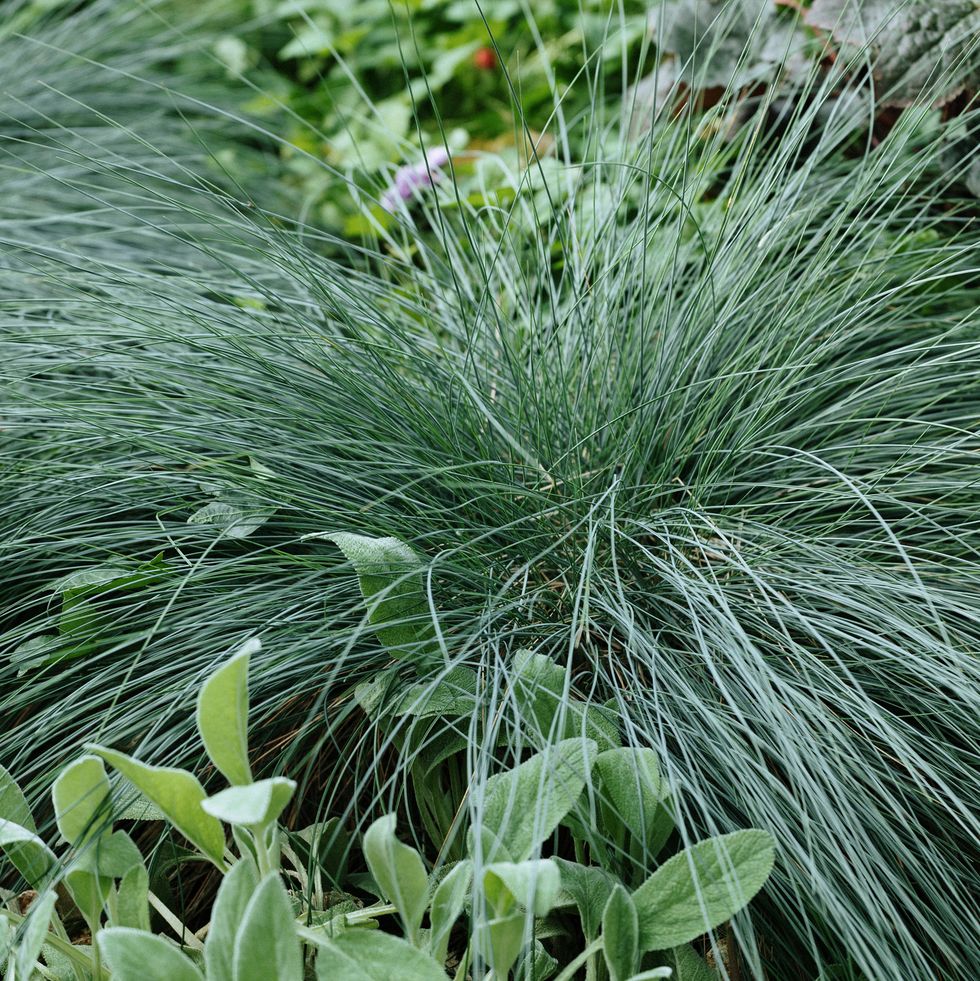
Foxglove
This biennial, shade-loving plant is often grown as an ornamental plant because of its vivid flowers. Foxglove's bright colors attract both people and animals (including pollinators like bees, butterflies, and hummingbirds), but it's important to remember that all parts of a foxglove plant are extremely toxic and poisonous. Plant in USDA Zones 4 through 9.

Gigantea Primrose
Hardy and colorful, primrose flowers are popular among gardeners all across the country due to their ability to thrive in both hot and cold climates. Primrose appreciates mild morning sun but does its best in partial to full shade. Plant in USDA Zones 3 through 8.
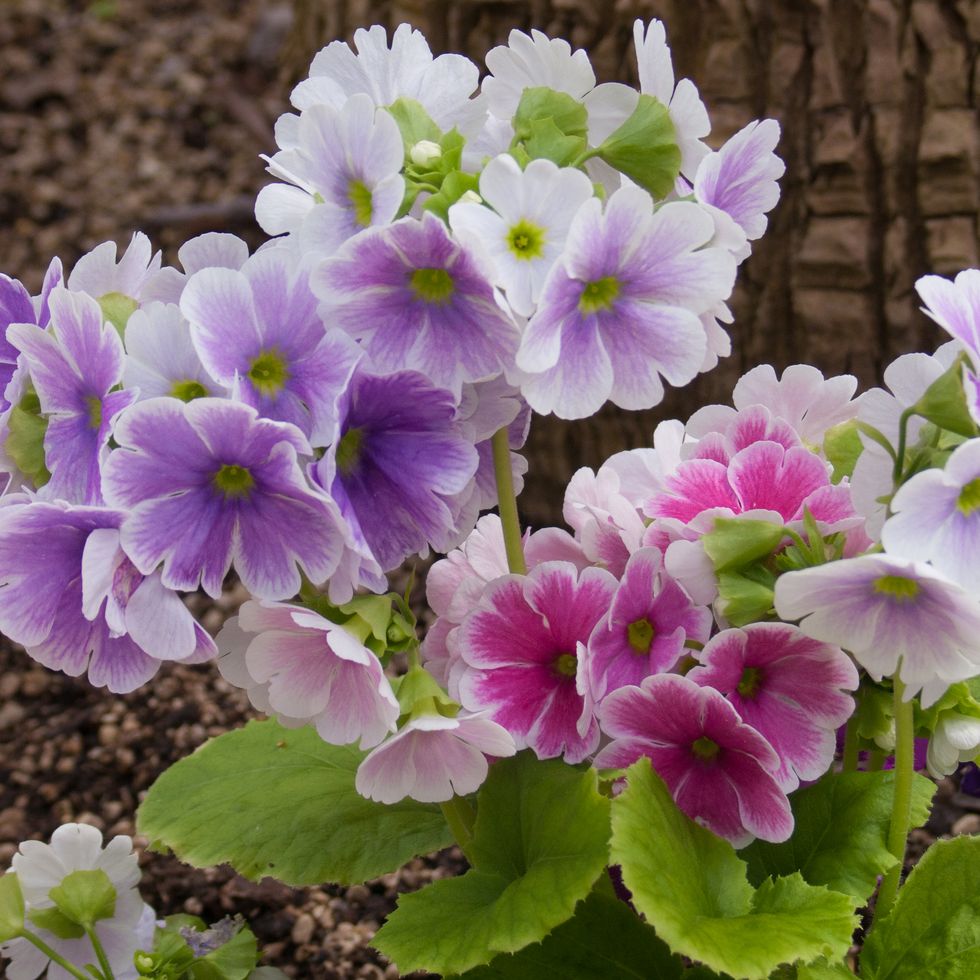
Browallia
Gaining in popularity as an alternative to impatiens, browallia is a beautiful annual that comes in shades of periwinkle blue, white, and violet. Its mounding foliage makes it an attractive choice for shady baskets, window boxes, and containers, and it can grow to reach about a foot wide and tall. Plant in USDA Zones 9 through 11.
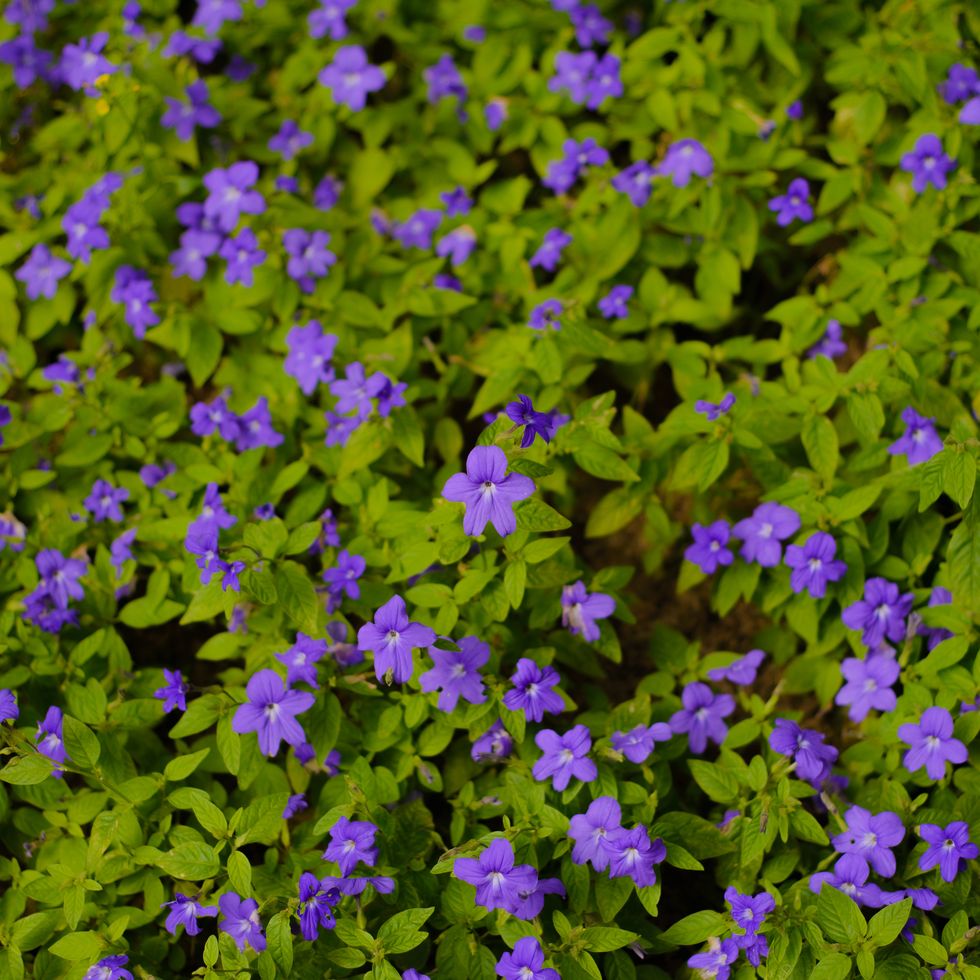
Hosta
Hostas range from a petite four inches to as big as six feet across, ensuring there's a suitable choice for every garden. These shade-loving plants are great for adding beautiful texture and greenery— just be aware that these perennials are a favorite of deer and rabbits. Plant in USDA Zones 3 through 9.
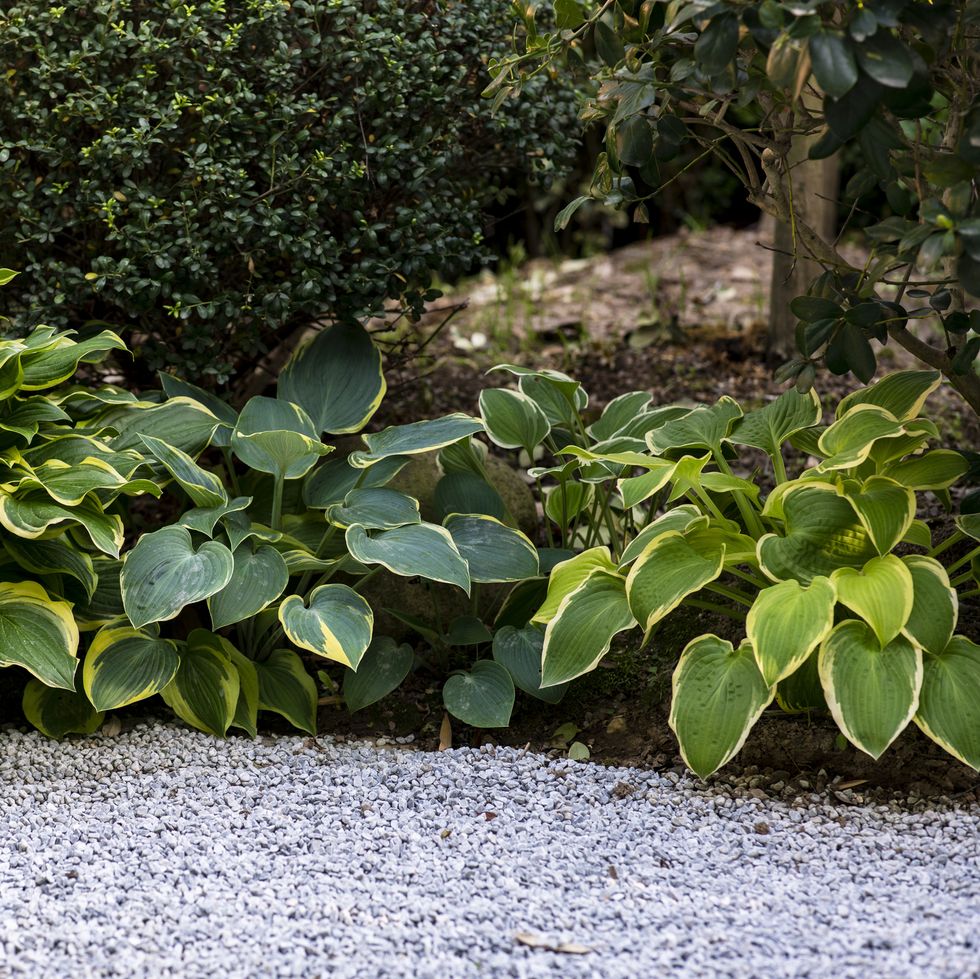
Marginata Lime Sweet Potato Vine
If you're looking for a vining annual that works equally well in sun and shade, a sweet potato vine is the answer. This pretty plant comes in shades of purple, burgundy, and chartreuse and looks fabulous spilling over the sides of containers and window boxes. Plant in USDA Zones 9 through 11.
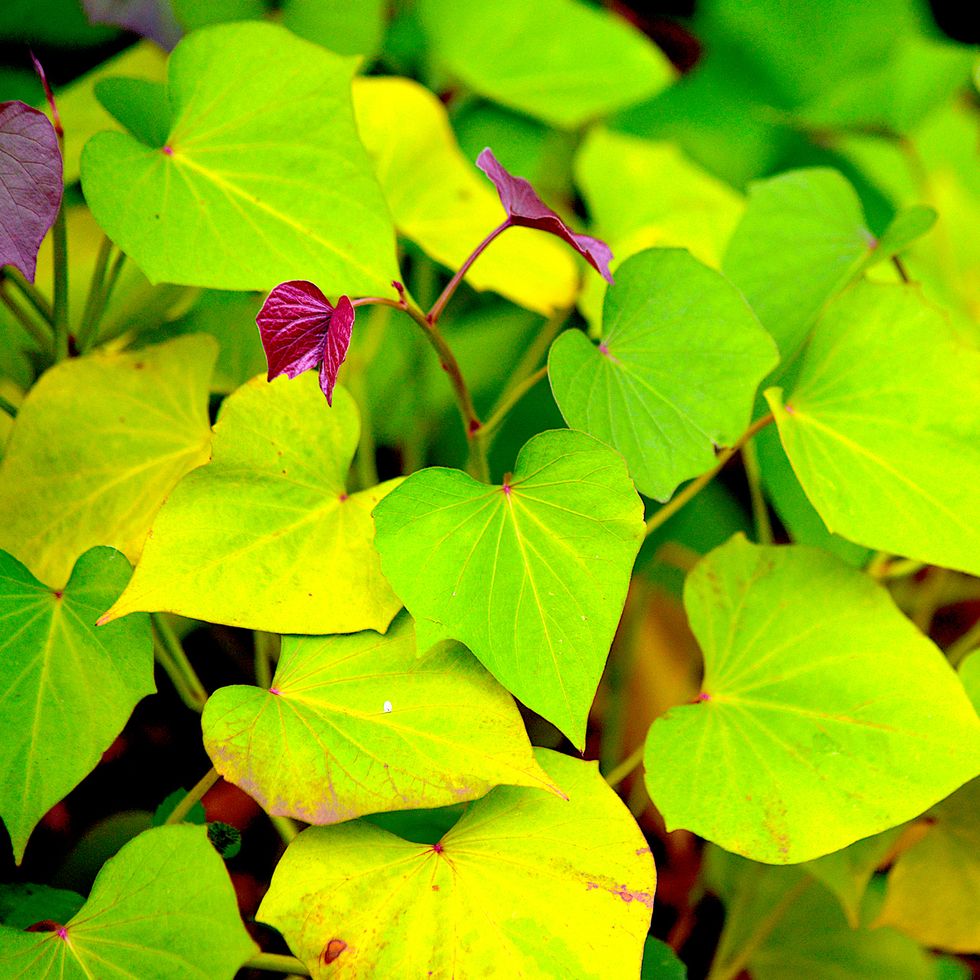
Begonias
Begonias do well in a variety of conditions, including full shade. Depending on the variety, they can range from six inches to three feet tall and six to 18 inches wide. Some types are grown primarily for their striking variegated foliage. Plant in USDA Zones 9 through 11, but can be grown as annuals in colder zones.
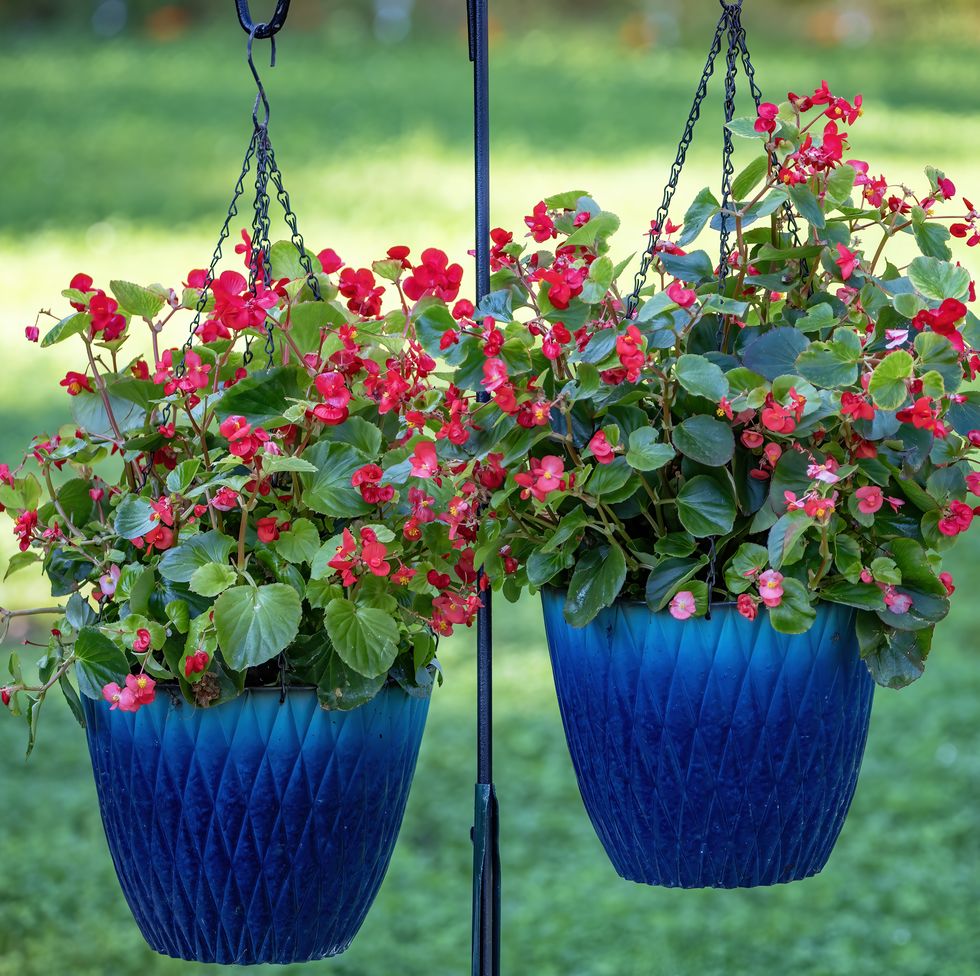
Ligularia
Ligularia, which is sometimes called the leopard plant, has large, showy leaves and bright flowers in shades of yellow. This shade-loving perennial is especially happy in boggy or wet conditions, where it can grow anywhere from three to eight feet tall and two to four feet wide. Plant in USDA Zones 4 through 9.
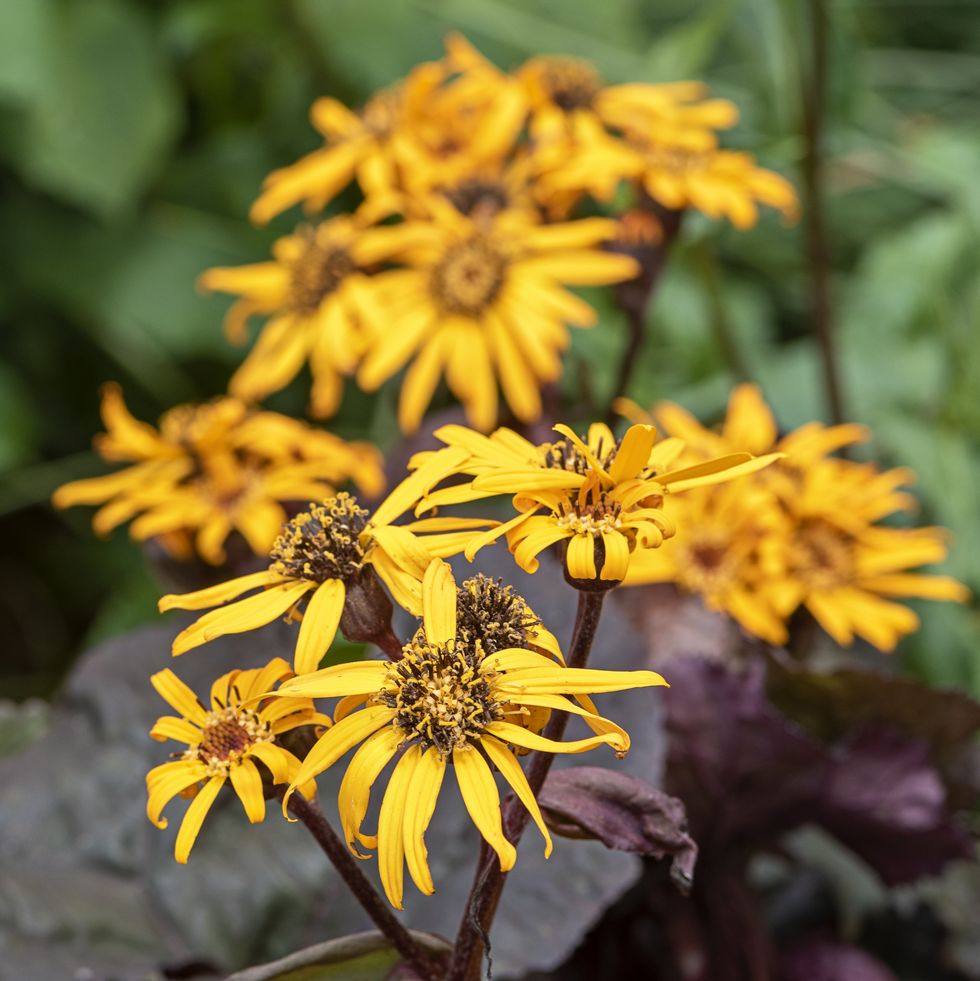
Viola Bambini
These happy-faced flowers tolerate full sun in the spring and fall, but come summer, they'll need part shade. They often die back in hot weather and revive when things cool down. They're annuals, but some types self-seed and may appear again next spring. Plant in USDA Zones 5 through 9.
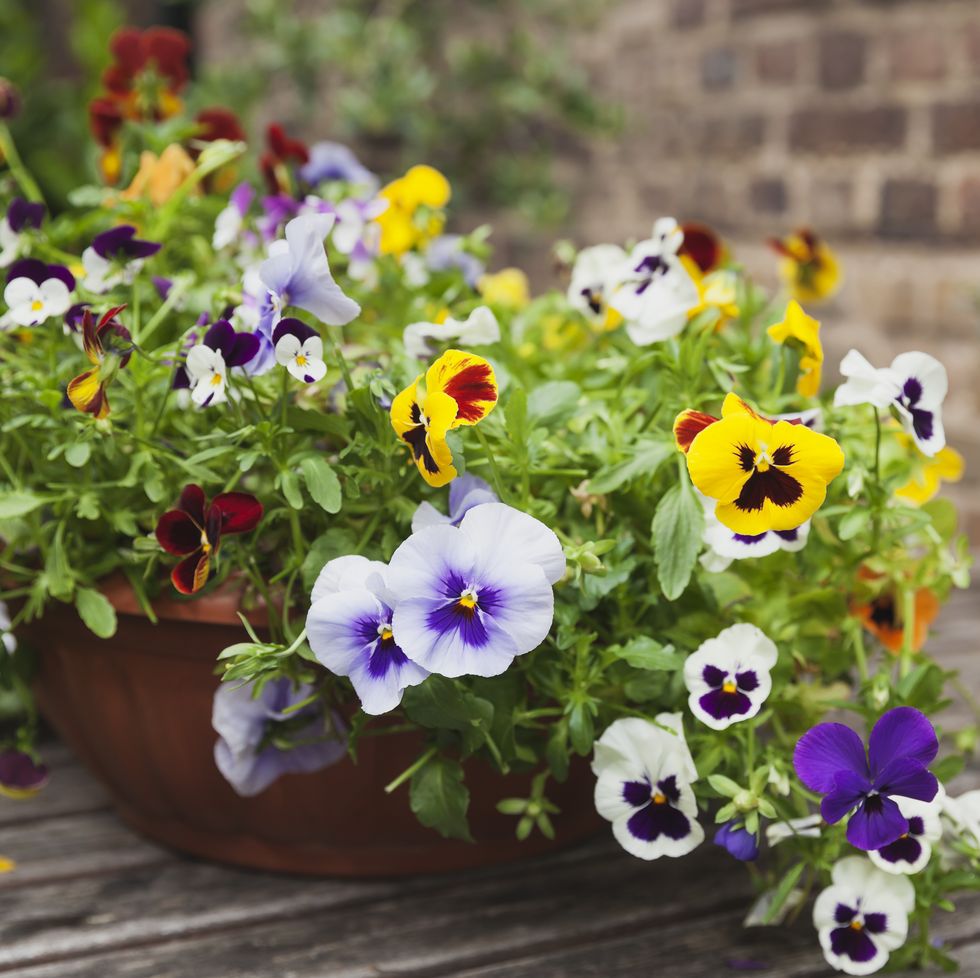
Epimedium x warleyense 'Orange Queen'
Also known as bishop's hat because of its flowers' unique shape, epimedium thrives in partial to full shade and blooms from mid-to-late spring. This perennial can grow between eight and 12 inches tall and 12 to 36 inches wide. It's a great ground cover for shady spots. Plant in USDA Zones 3 through 9.
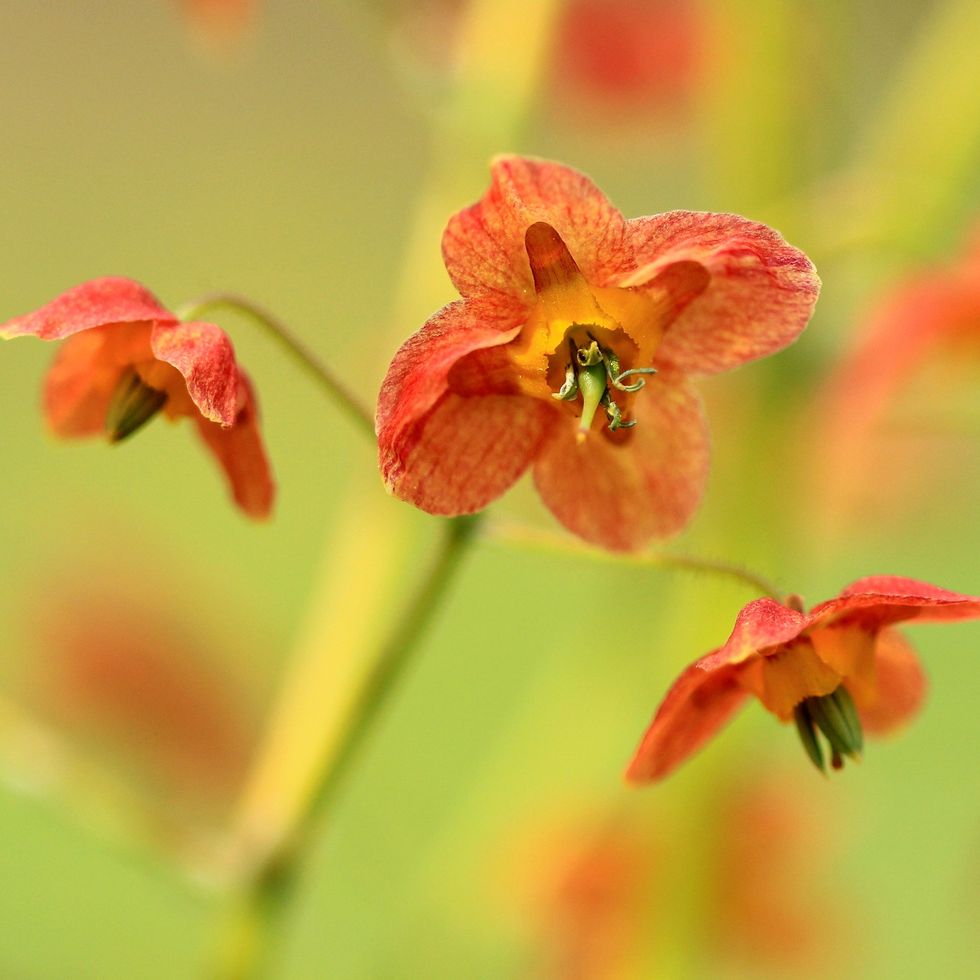
Brunnera Jack Frost
Often used as a ground cover, this perennial is known for its tiny flowers that bloom in the spring. It also has charming heart-shaped foliage with white variegation, making it a delightful shade-loving plant whether it's in bloom or not. Plant in USDA Zones 3 through 8.


